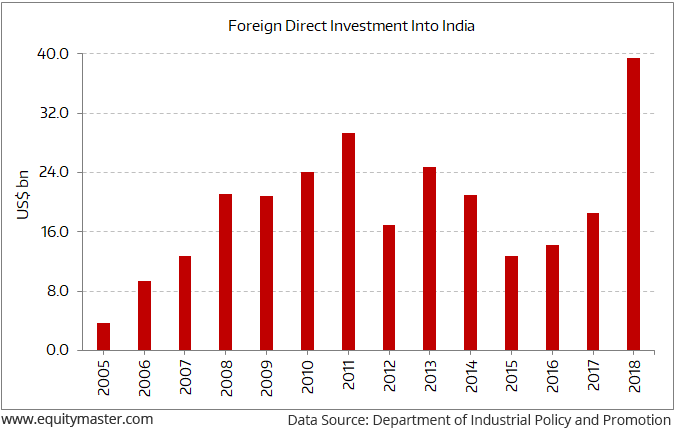- Home
- Todays Market
- Indian Stock Market News May 29, 2019
Sensex Trades Lower; ONGC and SBI Top Losers Wed, 29 May 12:30 pm
Stock markets in India are presently trading on a flat note with a negative bias. The BSE Sensex is trading down by 65 points and the NSE Nifty is trading down by 22 points. Meanwhile, the BSE Mid Cap index and the BSE Small Cap index are trading down by 0.4% and 0.2% respectively.
Among the sectoral indices, automobiles stocks and metal stocks are witnessing maximum selling pressure.
In the news from the currencies space. The rupee depreciated by 15 paise to 69.84 against the US dollar in early trade today on weak opening in domestic equities and foreign fund outflows.
The rupee opened weak at 69.77 at the interbank forex market and then fell further to 69.84, down 15 paise over its last close. The local currency however pared the initial loss and was trading at 69.77 in the morning session.
The rupee had settled at 69.69 against the US dollar on Tuesday.
However, easing crude oil prices supported the rupee and restricted the downfall.
Brent crude futures, the global oil benchmark, fell 0.7% to US$69.63 per barrel.
On the global front, the Trump administration on Tuesday removed India from its currency monitoring list of major trading partners, citing certain developments and steps being taken by New Delhi which address some of its major concerns.
Switzerland is the other nation that has been removed by the US from its currency monitoring list which among others include China, Japan, South Korea, Germany, Italy, Ireland, Singapore, Malaysia and Vietnam.
Moving on to the news from the economy. The Department for Promotion of Industry and Internal Trade (DPIIT) in its latest data has showed that foreign direct investment (FDI) in India declined for the first time in the last six years in FY19.
It fell by 1% to US$44.4 billion as compared to US$44.9 billion recorded in FY18.
Last time it was in FY13 when foreign inflows had registered a contraction of 36% to US$22.4 billion compared to US$35.1 billion in FY12. Since 2012-13, the inflows had been continuously growing and reached a record high in FY18.
2018: The Year When India Beat China in FDI
As per the data, FDI inflows in telecommunication, construction development, pharmaceuticals and power sectors declined significantly in FY19.
FDI in telecommunication dropped to US$2.7 billion in FY19 from US$6.2 billion in FY18, in construction development to US$213 million (US$540 million), in pharmaceuticals to US$266 million (US$1 billion) and in the power sector to US$1.1 billion (US$1.6 billion).
However, sectors that recorded a growth in FDI includes services (US$9.2 billion), computer software and hardware (US$6.4 billion), trading (US$4.5 billion), and automobile (US$2.6 billion).
The country wise, Singapore has replaced Mauritius as the top source of foreign investment into India in the FY19, accounting for US$16.2 billion inflows.
India has received US$8 billion FDI from Mauritius. The other major investors in the country includes Japan, the Netherlands, the UK, the US, Germany, Cyprus, the UAE and France.
FDI is important as India would require huge investments in the coming years to overhaul its infrastructure sector to boost growth.
Decline in foreign inflows could put pressure on the country's balance of payments and may also impact the value of the rupee.
To know what's moving the Indian stock markets today, check out the most recent share market updates here.
For information on how to pick stocks that have the potential to deliver big returns, download our special report now!
Read the latest Market Commentary



Equitymaster requests your view! Post a comment on "Sensex Trades Lower; ONGC and SBI Top Losers". Click here!
Comments are moderated by Equitymaster, in accordance with the Terms of Use, and may not appear
on this article until they have been reviewed and deemed appropriate for posting.
In the meantime, you may want to share this article with your friends!